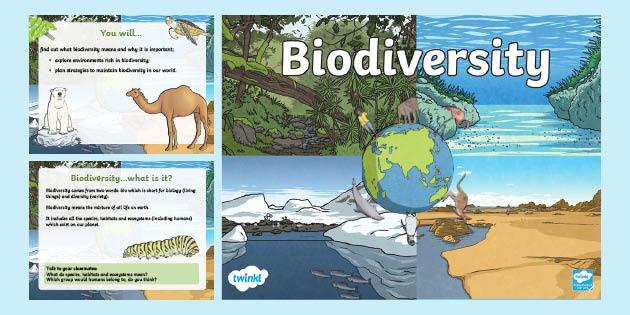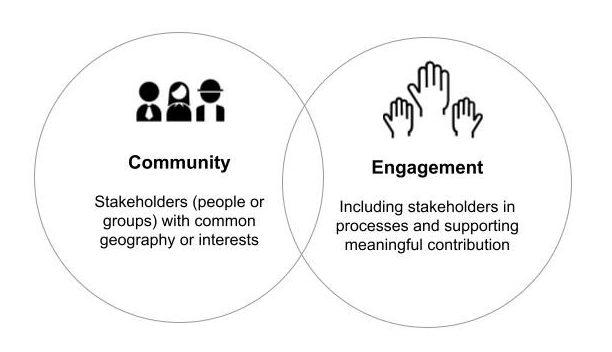In the ever-changing tapestry of our planet, ecosystems pulse with life, each organism, from the smallest microbe to the mightiest tree, playing a crucial role in maintaining the delicate balance of nature. Yet, as humanity’s footprint expands, the vitality of these intricate webs is increasingly threatened. Amidst the challenges, however, there are stories of resilience and hope—nature conservation victories that shine a light on our ability to restore and revitalize these irreplaceable habitats. This article delves into remarkable examples of successful conservation efforts, showcasing how communities and individuals have come together to heal the Earth, demonstrating that when we unite for a shared purpose, the natural world can not only survive but thrive. Join us on this inspiring journey through the landscapes of success, where the harmony of nature is not just a dream but a tangible reality waiting to be celebrated.
Table of Contents
- Celebrating Biodiversity: Case Studies of Successful Restoration Efforts
- Community Engagement: Empowering Local Voices in Conservation Initiatives
- Innovative Practices: Harnessing Technology for Sustainable Ecosystem Management
- Future Directions: Strategies for Holistic and Resilient Nature Conservation
- Future Outlook
Celebrating Biodiversity: Case Studies of Successful Restoration Efforts

Across the globe, numerous restoration projects have exemplified how concerted efforts can lead to remarkable recoveries of ecosystems. One such inspiring example is the Everglades Restoration Project in Florida, USA. This ambitious initiative aims to undo the damage caused by decades of agricultural development and urbanization. By restoring the natural flow of water, re-establishing wetlands, and controlling invasive species, the Everglades has seen a resurgence in biodiversity, with native species such as the Florida panther and American crocodile making a comeback in their natural habitats. Another noteworthy case is the rewilding effort in Scotland’s Highlands, where the introduction of native tree species and the management of grazing animals has allowed forest ecosystems to flourish, providing habitat for wildlife like the red deer and golden eagle.
Moreover, the restoration of the Great Barrier Reef in Australia showcases efforts to combat climate change damage and coral bleaching. Initiatives involving coral gardening and the protection of endemic species have not only revitalized the reef’s health but have also bolstered local fish populations. In addition, urban biodiversity initiatives in cities such as Singapore have demonstrated the power of integrating nature into urban planning, where vertical gardens and green roofs contribute to urban wildlife habitats, enhancing both ecological health and community well-being. These examples serve as beacons of hope, illustrating the potential of human ingenuity and collaboration in healing our planet’s natural wonders.
Community Engagement: Empowering Local Voices in Conservation Initiatives

Empowerment starts at the grassroots level, where local communities hold the key to driving sustainable conservation efforts. By fostering collaboration and inclusivity, conservation initiatives can unleash the full potential of community knowledge and cultural practices. Local voices provide unique insights into wildlife dynamics and ecosystem needs, enriching the overall strategy for environmental stewardship. Engaging residents not only creates a sense of ownership but also cultivates a strong commitment to preserving natural resources, allowing communities to thrive alongside the ecosystems they inhabit.
Successful examples around the globe showcase the power of local engagement in conservation initiatives. Initiatives such as community-managed forests or fishing zones demonstrate that when people are invested in their environment, both biodiversity and human well-being flourish. These thriving local victories can be quantified through measurable outcomes, presenting compelling evidence for wider adoption. Below is a brief overview of some of these triumphant cases:
| Location | Initiative | Outcome |
|---|---|---|
| Amazon Rainforest | Community-led reforestation | 20% increase in biodiversity |
| Great Barrier Reef | Local fishery management | 30% improvement in fish populations |
| Galapagos Islands | Invasive species control | Restoration of native flora |
Innovative Practices: Harnessing Technology for Sustainable Ecosystem Management
As we strive to protect our natural world, the integration of technology into ecosystem management presents a golden opportunity for innovation and efficiency. One of the key advances in this domain is the use of remote sensing technologies, which enable conservationists to monitor environmental changes from a distance. This allows for a comprehensive understanding of ecosystems that can inform decision-making processes. Tools such as satellite imagery and drones provide invaluable data, addressing challenges like illegal deforestation and habitat fragmentation.
Moreover, digital platforms and applications have emerged as powerful allies in the fight for ecological balance. These tools facilitate community engagement and awareness, driving collective action toward conservation goals. For example, citizen science initiatives encourage individuals to participate actively in data collection, enhancing local knowledge while fostering a sense of ownership over natural resources. The collaborative nature of these technologies ensures that diverse voices contribute to sustainable management efforts, creating a synergy that uplifts both community aspirations and ecological integrity.
Future Directions: Strategies for Holistic and Resilient Nature Conservation
As we look ahead, integrating community engagement into conservation efforts is paramount for fostering resilient ecosystems. By harnessing the collective power of local populations, conservation projects can gain invaluable insights and support. Strategies to encourage participation might include:
- Educational Initiatives: Workshops and programs that empower individuals with knowledge about local biodiversity and sustainable practices.
- Collaborative Stewardship: Initiating partnerships with indigenous communities to co-manage lands, recognizing traditional ecological knowledge.
- Volunteering Opportunities: Creating platforms for community members to actively participate in restoration projects.
Furthermore, innovative approaches must be prioritized to bridge the gap between ecological viability and economic sustainability. Developing circular economies that promote the use of natural resources with minimal environmental impact is crucial. Some focus areas include:
| Strategy | Benefits |
|---|---|
| Ecotourism Development | Supports local economies while prioritizing conservation efforts |
| Agroecological Practices | Enhances soil health and biodiversity, reducing reliance on chemicals |
| Green Infrastructure | Improves urban areas, providing ecosystem services while mitigating climate effects |
Future Outlook
As we close our exploration of thriving ecosystems and the remarkable nature conservation victories that inspire us, it’s clear that the journey of stewardship and restoration is an ongoing saga—one where every win, no matter how small, contributes to a larger narrative of hope and resilience. These stories remind us that the fabric of our planet is intricately woven with the threads of biodiversity, and when nurtured, it flourishes beyond our expectations.
Yet, the work is far from over. The challenges ahead are formidable, but they are not insurmountable. As we draw inspiration from these victories, let us channel our collective energy into fostering a deeper understanding of the delicate balance within our ecosystems. Each of us has a role to play—be it through advocacy, education, or simple acts of kindness toward the natural world.
In recognizing our interconnectedness with nature, we can ignite a new movement of conservation, one that celebrates every success while remaining ever vigilant against the threats that loom. As we continue on this path, let us remember: every tree planted, every creature protected, and every habitat restored is a testament to the power of determination and the spirit of collaboration.
May these inspiring victories serve as guideposts, lighting our way toward a future where nature and humanity thrive in harmony. Together, let us commit to nurturing these thriving ecosystems, ensuring that their stories of resilience echo through generations to come.



